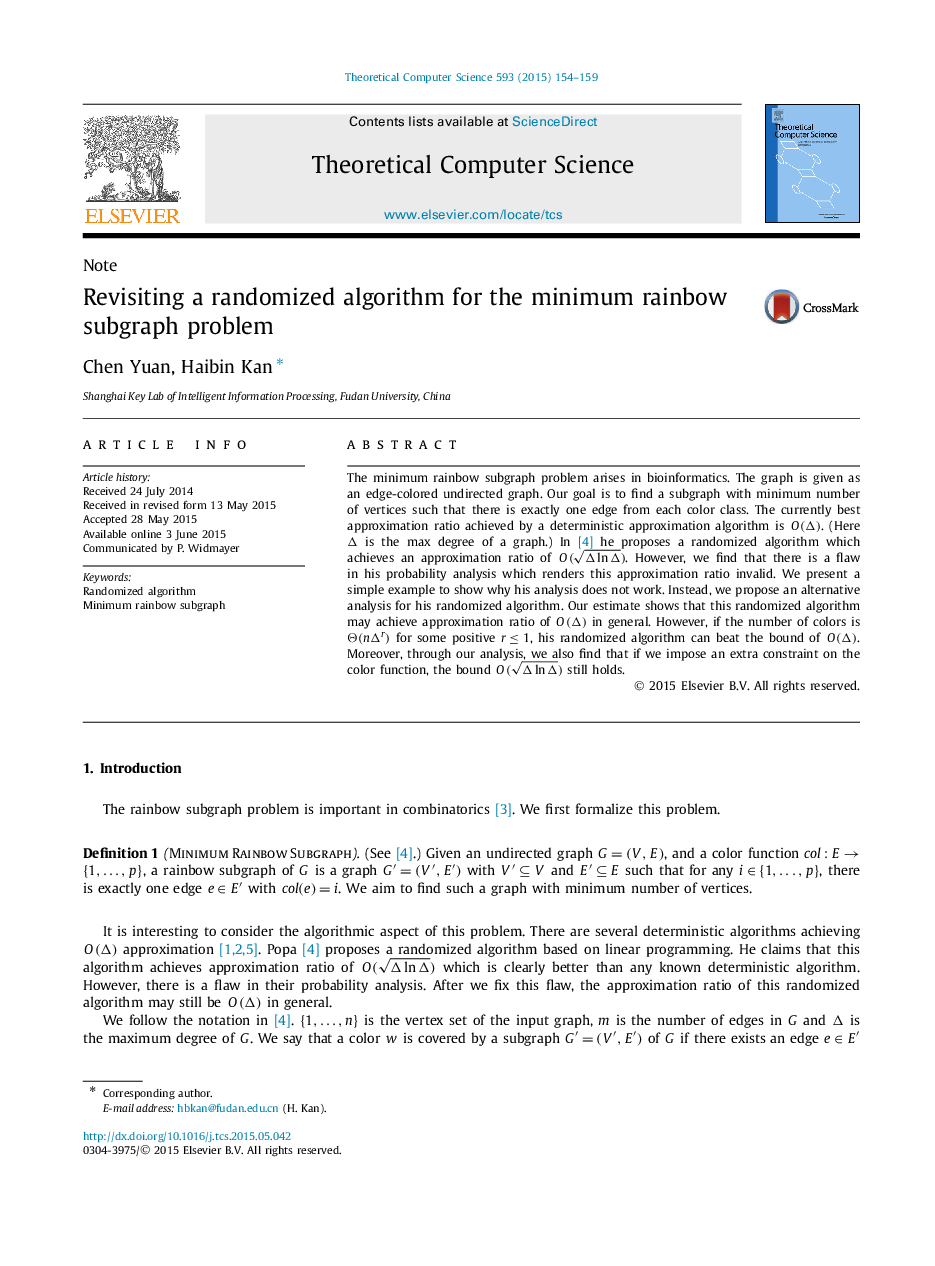| Article ID | Journal | Published Year | Pages | File Type |
|---|---|---|---|---|
| 433856 | Theoretical Computer Science | 2015 | 6 Pages |
The minimum rainbow subgraph problem arises in bioinformatics. The graph is given as an edge-colored undirected graph. Our goal is to find a subgraph with minimum number of vertices such that there is exactly one edge from each color class. The currently best approximation ratio achieved by a deterministic approximation algorithm is O(Δ)O(Δ). (Here Δ is the max degree of a graph.) In [4] he proposes a randomized algorithm which achieves an approximation ratio of O(ΔlnΔ). However, we find that there is a flaw in his probability analysis which renders this approximation ratio invalid. We present a simple example to show why his analysis does not work. Instead, we propose an alternative analysis for his randomized algorithm. Our estimate shows that this randomized algorithm may achieve approximation ratio of O(Δ)O(Δ) in general. However, if the number of colors is Θ(nΔr)Θ(nΔr) for some positive r≤1r≤1, his randomized algorithm can beat the bound of O(Δ)O(Δ). Moreover, through our analysis, we also find that if we impose an extra constraint on the color function, the bound O(ΔlnΔ) still holds.
